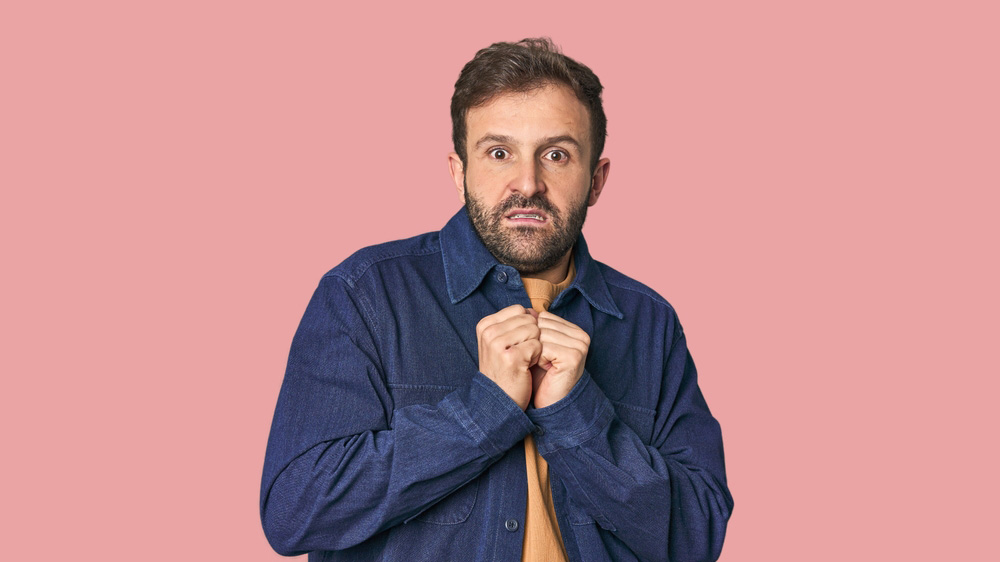Free Yourself and Dare to Shine!
You know the feeling: a racing heart, shortness of breath, a frozen body… That fear that pins you in place, preventing you from acting, daring, or moving forward. A formidable trap that seems inescapable. Yet, fear is not a fatality! It is a signal, a challenge, a springboard toward self-improvement. How can we tame it and turn it into a driving force instead of a brake? Let’s dive into the art of defying paralyzing fear and taking back control. Ready to dance with the unknown instead of running from it? Let’s go!
Why Does Fear Paralyze Us?
Fear is an ancient mechanism, a remnant of our survival instinct. When our brain perceives a threat, it triggers the “fight, flight, or freeze” response. The freeze response is often linked to a feeling of helplessness—an icy panic that makes the body and mind refuse to move.
This phenomenon is linked to the amygdala, a brain region responsible for processing emotions. When facing a perceived threat, it sends signals to the body, sometimes blocking all rational action. This reaction could have saved our ancestors’ lives when facing a predator thousands of years ago. But today, fear more often paralyzes us in social, professional, or personal challenges.
Triggers of Paralyzing Fear
- Fear of judgment: The fear of being judged can be so strong that it stops us in our tracks.
- The unknown: Anything we don’t control can become a source of anxiety.
- Past failures: A bad experience can condition our brain to avoid similar situations.
- Perfectionism: Excessive self-demand blocks action out of fear of not being “good enough.”
1. Recognizing and Understanding Your Fear
Before overcoming fear, you must understand it. Observe it without judgment. What is its source? What is it trying to tell you?
📌 Exercise: The Fear Journal
Take a notebook and write down every situation where you feel paralyzed. Describe:
- The specific situation
- Your physical sensations
- Your dominant thoughts
- Your associated emotions
By identifying patterns, you will regain power over these unconscious mechanisms.
2. Changing Your Perception of Fear
What if fear wasn’t an enemy but a guide? Instead of running from it, let’s welcome it.
🔹 Reprogramming Your Brain
Thoughts fuel our emotions. If you tell yourself, “I’m going to fail,” your brain will trigger an alert state. Reverse the trend with positive affirmations:
- “This fear is a sign that I am stepping out of my comfort zone.”
- “I turn my stress into excitement.”
- “I have already overcome fears before; I can do it again.”
🔹 The Power of Gradual Exposure
Face your fear step by step. If public speaking terrifies you, start by sharing an idea in a small group, then gradually speak in front of larger audiences. Every step strengthens your confidence.
🔹 Play with Fear
Turn fear into a game. Ask yourself, “If this situation were a fun challenge, how would I approach it?” This helps you take a step back and break fear’s grip.
3. Activating Your Body to Break the Paralysis
Your body plays a key role in regulating emotions.
🔥 Deep Breathing
When fear strikes, practice coherent breathing: inhale slowly through your nose for 4 seconds, hold for 4 seconds, exhale for 6 seconds. This sends a calming signal to your brain.
🔥 Movement Against Paralysis
Walk, dance, jump! Physical activity reduces cortisol (the stress hormone) and helps you regain control.
🔥 Sensory Grounding
Rub your hands together, touch an object, focus on a fixed point. These actions bring your attention back to the present moment and soothe your mind.
4. Acting Despite Fear
Action is the greatest antidote to fear. Once you start, inertia fades.
💡 The 5-Second Rule (by Mel Robbins)
When fear arises, count 5, 4, 3, 2, 1… and take action! Don’t let your brain negotiate with hesitation.
💡 Setting Micro-Goals
Instead of aiming for a massive change, break your challenge into small steps. Example: If you want to change jobs but fear paralyzes you, start by sending an email, then updating your resume, etc.
💡 Embracing Imperfection
Failure is part of the process. Accept that taking action sometimes involves missteps. But every action, even imperfect, brings you closer to your goal.
5. Turning Fear into Positive Adrenaline
Fear and excitement are two sides of the same coin. It’s up to you to transform them!
✨ Mental Imagery
Visualize yourself successfully overcoming your fear. Your brain doesn’t distinguish between imagination and reality, so use this power to your advantage!
✨ Surround Yourself with Support
Talk about your fears with kind people. An external perspective can break the mental block.
✨ Celebrate Every Victory
Acknowledge every small step you take. Progress builds confidence and gradually neutralizes fear.
Conclusion: Taking Back Control of Your Emotions
Paralyzing fear is not inevitable. It’s a signal, an invitation to grow, a springboard to a bolder version of yourself. Through awareness, perception shifts, gradual action, and body regulation, you can tame fear and turn it into a powerful force.
So, which fear will you challenge today? 😉
Sources :
- Harvard Medical School – The Science of Fear (Lien)
- Psychology Today – Overcoming Fear Paralysis (Lien)
- Neuroscience News – Fear and the Amygdala (Lien)
- American Psychological Association – How fear shapes behavior (Lien)
- Nature Neuroscience – Brain pathways of fear (Lien)


